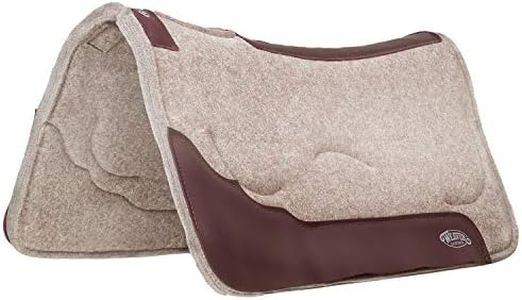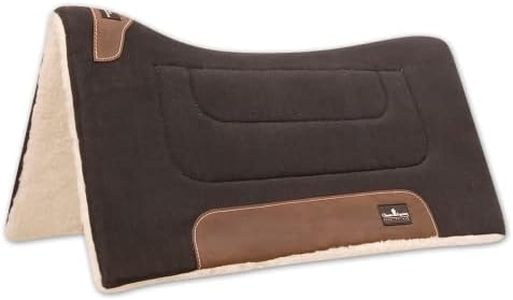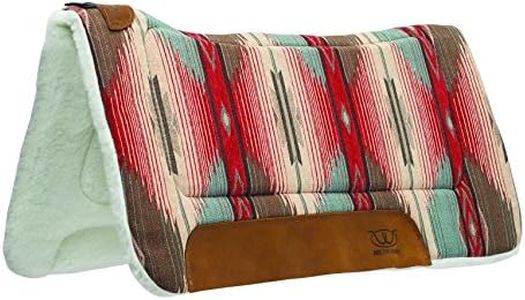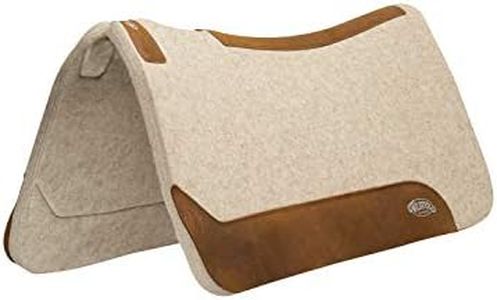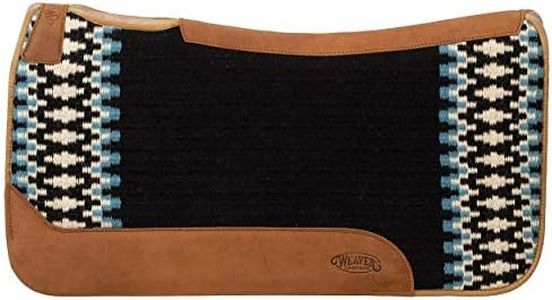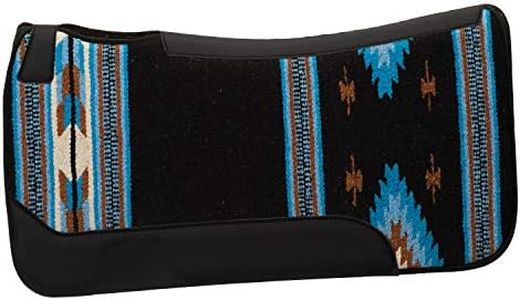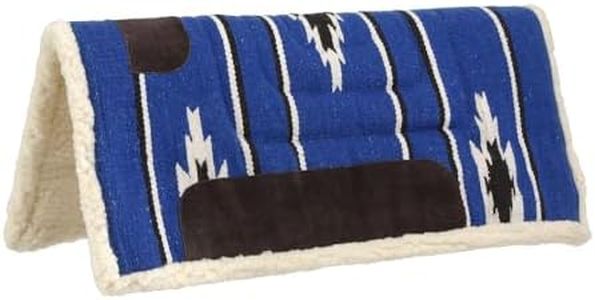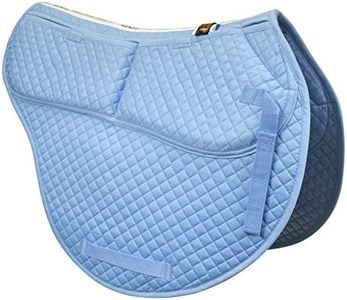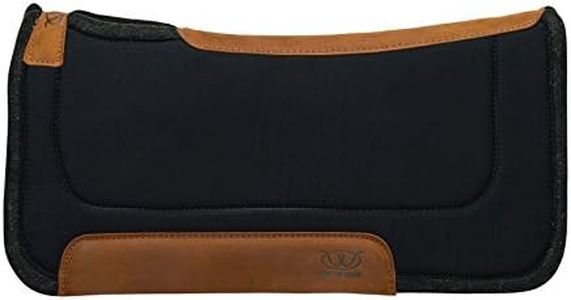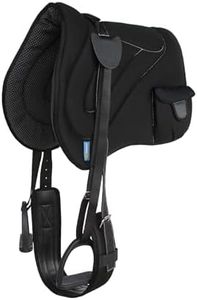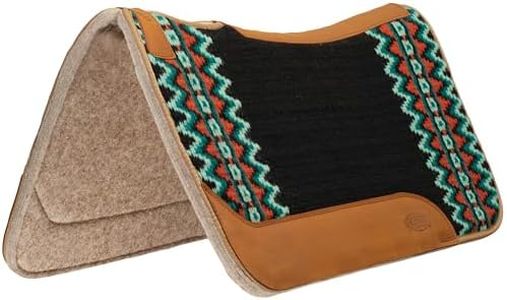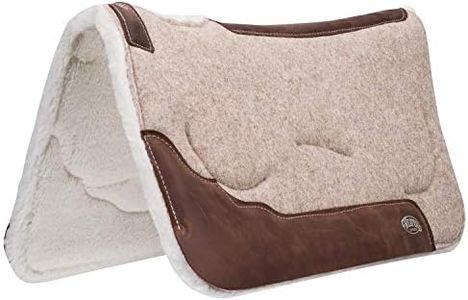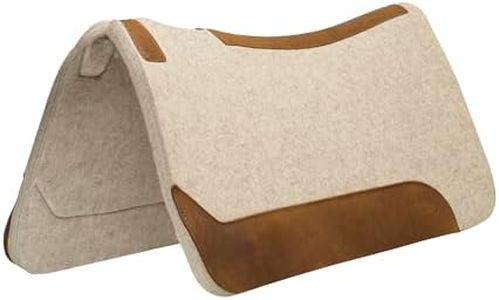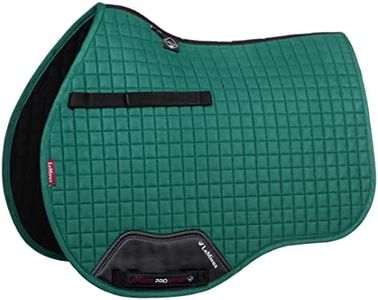We Use CookiesWe use cookies to enhance the security, performance,
functionality and for analytical and promotional activities. By continuing to browse this site you
are agreeing to our privacy policy
10 Best Saddle Pads
From leading brands and best sellers available on the web.By clicking on a link to a third party's website, log data is shared with that third party.
Buying Guide for the Best Saddle Pads
When choosing a saddle pad, it's important to find one that not only fits your horse and saddle well but also supports your riding activities. A good saddle pad helps protect your horse’s back, provides comfort, and can even enhance performance. You'll want to consider your horse’s needs, the type of riding you do, and any specific issues you’re looking to solve, like moisture control or extra cushioning. By understanding the main features and specifications, you can make a choice that best matches your riding style and your horse's comfort.MaterialThe material of a saddle pad affects comfort, breathability, durability, and how well moisture is managed. Common materials include cotton, wool, synthetic fibers, and gel. Cotton is soft and breathable but may not have as much cushion. Wool is naturally moisture-wicking and offers good shock absorption, making it great for long rides. Synthetics are lightweight and easy to clean, though they vary in breathability. Gel-infused pads are designed for extra cushioning but can be heavier or less breathable. Choose the material based on whether you need more breathability (hot climates), more padding (sensitive horses), or ease of cleaning (frequent use).
Shape and SizeSaddle pads come in different shapes—such as all-purpose, dressage, or jumping—designed to match the contours of different saddles. Getting the right shape ensures even weight distribution and prevents rubbing. Size matters because a pad that's too small won't protect your horse's back adequately, and one that's too large can bunch up and cause discomfort. To pick the right one, ensure the pad matches both your saddle style and the shape of your horse’s back, covering all areas in contact with the saddle without excess overhang.
Thickness and PaddingThickness determines the level of cushioning and support. Thinner pads offer minimal cushioning and are suited for well-fitting saddles and horses with healthy backs. Medium-thick pads provide a balance of support and close contact, ideal for everyday riding. Extra-thick or orthopedic pads are best for horses that need more shock absorption or have sensitive backs. Consider your horse's back health and the fit of your saddle—more padding may help if your saddle fit isn't perfect, but too much can cause instability.
Moisture-Wicking AbilityMoisture-wicking tells you how well the pad absorbs and manages sweat, keeping your horse’s back drier and preventing irritation or sores. High moisture-wicking pads use materials like wool or technical synthetics. If you ride in warm or humid conditions or your horse sweats a lot, look for pads specifically designed to keep moisture away from the skin. This improves comfort and helps maintain healthy skin.
BreathabilityBreathability reflects how well air can pass through the pad, which helps regulate temperature and keeps your horse cool. Highly breathable pads are made of mesh or perforated materials. Breathability is especially important for long rides or in hot climates, as it helps prevent overheating. If you notice your horse gets hot or develops sweat marks, opt for a pad focused on airflow.
Wither ReliefWither relief refers to special shaping or cut-outs around the horse's withers—the area between the neck and back—to avoid pressure and rubbing. Some pads are built with a higher cut or extra padding here. Horses with prominent withers or those prone to sores benefit from pads with good wither clearance. If your horse has a more pronounced back shape, prioritize this feature.
Maintenance and CleaningHow easy a pad is to care for can make a big difference if you ride often. Some materials are machine-washable, while others may need spot cleaning or air-drying. Pads used in muddy or sweaty conditions will need more frequent washing, so if convenience is key for you, look for options labeled as easy to clean and quick to dry.
